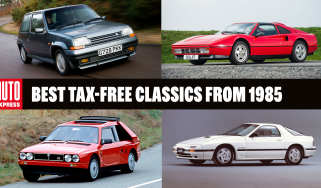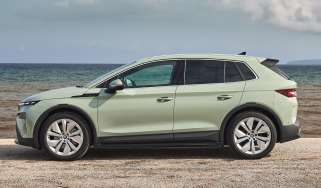Range Rover Mk4
Groundbreaking new car looks to the future, setting fresh standards all over again
Over the past four decades the Range Rover has grown from humble beginnings to become one of the world’s most recognisable and loved luxury vehicles. The fourth-generation model promises to take this class and razzmatazz factor to a whole new level. More than ‘merely’ being a luxurious 4x4, the new car aspires to be mentioned in the same breath as Rolls-Royce and Bentley.
It has been designed to rival the comfort and on-road handling of benchmark luxury saloons such as the Mercedes S-Class, yet lose none of its legendary off-road ability. In short, the Range Rover should be the complete distinguished vehicle for every situation.
Our first experiences behind the wheel of the new car make it clear that Land Rover has got closer to hitting the bullseye than ever before: it sees the biggest steps forward in the Rangie’s history. But while its technology and opulence would be unimaginable to the designers of the 1970 original, this is still unmistakably a Range Rover.
Even though it’s bigger than ever, Gerry McGovern and his team have produced the most aerodynamic model so far, with an impressive drag coefficient of 0.34. Still, the floating roof, split tailgate and clamshell bonnet are present. Inside, cabin quality has moved on to even higher standards, while the choice of leathers, trims and colours on offer allows for unlimited personalisation.
More reviews
Car group tests
In-depth reviews
Long-term tests
Road tests
- Range Rover (Mk1, 1970–1994) icon drive: Britain’s first luxury SUV
- New Range Rover PHEV 2022 review
- New Range Rover D350 Autobiography 2022 review
- New Range Rover 2022 review
Used car tests
You’re treated to that classic lofty view of the road and an array of hi-tech kit. However, it’s the hidden technology that’s arguably the most impressive. For starters, the new all-aluminium body is 39 per cent lighter than the previous model’s, while all cars get an eight-speed auto box. You can choose from two diesel and two petrol engines as well. The range starts with the 255bhp TDV6, which emits only 196g/km, while at the other end of the scale is the mighty 503bhp supercharged petrol V8 model that costs nearly £100,000. The car in our pictures was powered by the smooth and muscular 334bhp 4.4-litre SDV8 that mixes 700Nm of torque with 229g/km CO2 emissions.
On the move, all benefit from amazing wheel travel and standard air-suspension to deliver a tranquil, cushioning ride, while improved steering and road holding provide new levels of agility. On SDV8 and supercharged petrol cars, active anti-roll bars reduce body lean even further, while adaptive dampers add an extra layer of polish to the ride.
The second-generation Terrain Response system still has five driving modes, but there’s now an Auto setting, which uses numerous chassis and transmission sensors to adapt seamlessly to the terrain. Off-road departure and approach angles have improved, and the wading depth is increased to an incredible 900mm. But it’s the effortless pace and serene comfort on-road that will win over customers old and new.
Road noise is virtually eliminated from the cabin, while legroom is much improved. A forthcoming long-wheelbase version is slated to deliver the sort of space usually reserved for luxury limos. With a diesel hybrid that’s targeting emissions of 169g/km set to join the line-up before the end of 2013, the evolution of the Range Rover continues. Now on sale in 170 countries, the newcomer has taken the principles of its predecessors and become a stunningly well rounded luxury vehicle. Here’s to the next 40 years...







